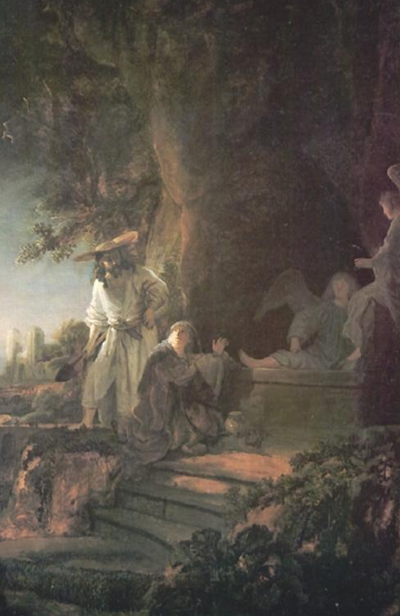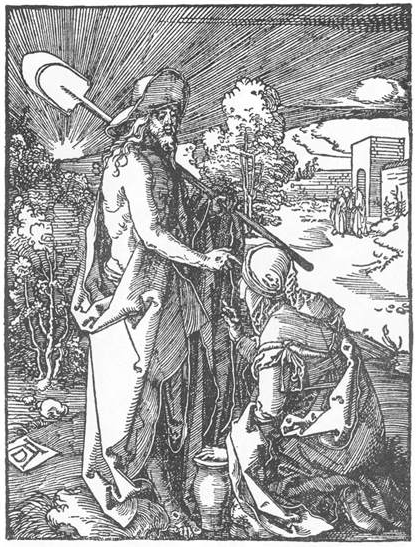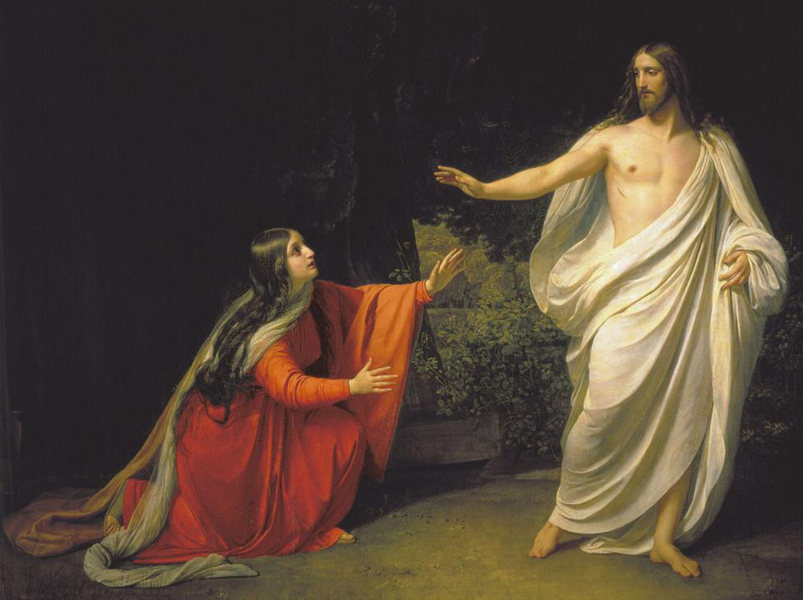The first day of the week, very early in the morning, when it was still dark, Mary Magdalene went to the tomb and saw that they take taken away the stone that covered the entrance. So she went running to see Simon Peter and the other disciple, the one whom Jesus loved, and said to them:
“They have taken the Lord from the tomb, and we don’t know where they have put him!”
Peter and the other disciple went then towards the tomb. Both went running, but since the other disciple ran faster than Peter, he arrived first at the tomb. Leaning down, he looked in and saw the wrappings, but he didn’t enter. After him arrived Simon Peter, and he entered the tomb. He saw the wrappings and the covering that had covered the head of Jesus, although the covering was not with the wrappings, but rolled up in a separate place. At that moment the other disciple entered too, he that had arrived first at the tomb; he saw and believed. Until then they had not understood the Scripture, which says that Jesus had to rise.
The disciples returned to their home, but Mary remained outside, crying next to the tomb. As she cried, she leaned over to look inside the tomb, and she saw two angels dressed in white, seated where the body of Jesus had been, one at the head and the other at the feet.
“Why do you cry, woman?” the angels asked her.
“It’s that they have taken away my Lord, and I don’t know where they have put him.” she responded to them.
This just said, she turned her gaze and there saw Jesus on foot, though she didn’t know it was he. Jesus said to her:
“Why do you weep, woman? Whom do you seek?”
She, thinking it was the one who cared for the garden, said to him:
“Sir, if you have taken him, tell me where you have put him, and I will go for him.”
“Mary” Jesus said to her.
She turned and exclaimed, “Rabboni!” (which in Aramaic means Teacher).
“Let go of me, because I have not yet returned to the Father. Better, go to my brothers and tell them, “I return to my Father, who is your Father; to my God, who is your God.”
Mary Magdalene went to give the news to the disciples. “I have seen the Lord!” she exclaimed, and she told them what he had said.
At evening on that first day of the week, the disciples being gathered behind locked door for fear of the Jews, Jesus entered and, putting himself in the midst of them, he greeted them.
“Peace be with you all!”
This said, he showed them his hands and side. Upon seeing the Lord, the disciples rejoiced.



